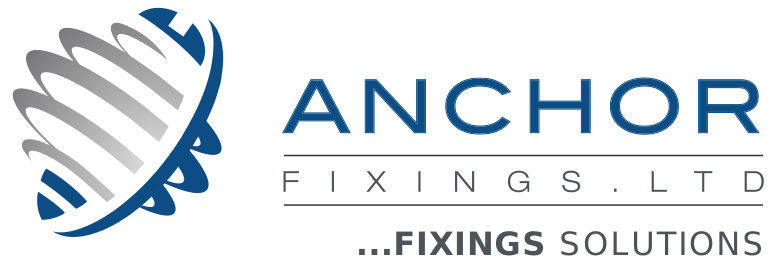Frequently asked questions
- How do I contact one of your sales team?
Our team can be reached via the following:
- How long will it take to get my blades sharpened?
Blades which can be sharpened in our facility, which will take 2-3 days.
- Can I ship my blades to you?
Yes, your blades can be shipped. We can arranged collection and delivery back to you. There is a small carraige charge for this service, depending on location and number of blades. Contact our sales team for more information.
- Can you repair damaged blades?
Yes, blades can be repaired if they have damaged or missing teeth. We will always contact you if it is not economically viable to repair the blade.
- What happens if my blades are unrepairable?
If it is not economically viable to sharpen or repair your blades, we will return them to you.
- I live in the UK, can I ship my blades to you for servicing?
Yes, we cover nationwide, therefore you can ship your blades to our facility, or we can arrange collection. Contact one of our sales team for pricing.
- Do you have a Saw Doctor?
Yes, we have our own full-time saw doctor.
- I live in S.Ireland, can I ship my blades to you for servicing?
Yes, we cover nationwide, therefore you can ship your blades to our facility, or we can arrange collection. Contact one of our sales team for pricing.
- Can I arrange a weekly/fortnightly call from one of your sales team?
Yes, contact the team on sales@bladetorq.com and we can arrange a day and time that suits you.
- Can Circular Saw Blades Be Sharpened?
Yes, most high-quality blades—especially Tungsten Carbide-Tipped (TCT), High-Speed Steel (HSS), and cold saw blades—are designed to be sharpened multiple times to extend service life and maintain cutting performance.
- What Types of Blades Are Commonly Sharpened?
Blade Type
Sharpenable?
Notes
Carbide-tipped (TCT)
✅ Yes
Most common for wood and composites & soft metals
HSS blades
✅ Yes
Used in metal cutting (cold saws)
Cermet-tipped
✅ Yes
Sheet metal and pipe cutting
Diamond blades
⚠️ Sometimes
Can be dressed, not traditionally sharpened
Cheap steel blades
❌ Not recommended
Often not cost-effective
- What Equipment do we use for Sharpening?
- Fully automatic 8 axes CNC machines (Vollmer, Loroch) – precision for face and top grinding
- High-precision inspection Equipment – Analysing the tooth geometry & condition
- Vollmer Retipping machines – Repair for broken/damaged teeth
- Twin rimmed diamond wheels – High precision and durability.
- What Angles and Geometries Are Important?
Feature
Typical Range
Hook angle
+5° to +25° (wood), 0° to -5° (metal)
Top bevel angle
10°–20° (ATB), 0° (flat-top)
Clearance angle
15°–25°
We Always match the original grind pattern (unless asked to be changed if possible)
- How Often Should Blades Be Sharpened?
Depends on:
- Material being cut
- Blade quality
- Feed rate and RPM
- Daily usage hours
Common practice: Monitor by linear feet/meters cut, and sharpen before signs of degradation affect cut quality.
- What Are the Signs a Blade Needs Sharpening?
- Increased feed pressure
- Burning or discoloration of material
- Frayed edges or tear-out
- Loud or inconsistent noise
- Reduced cut accuracy
- Missing/chipped teeth
- How Many Times Can a Blade Be Sharpened?
- Carbide blades: 5–15 times depending on tooth size and usage
- HSS blades: Up to 20+ times if well-maintained
- What’s the Sharpening Process for TCT Blades?
- Clean the blade (remove resin/pitch)
- Inspect for tooth damage or warping
- Load blade in to machine
- Grind:
- Face first, then
- Top
- Check runout, side clearance, and tip geometry
- Rebalance if necessary
- Dip blades in protective coating
- Repack for return/use
- How Should Blades Be Shipped and Stored?
- Use foam-lined containers or dedicated blade boxes
- Clearly label blade diameter, tooth count, material, and previous sharpening date
- Store in dry, controlled environments to prevent rust or warping
- What material are Morso blades made from?
Morso blades are typically made from high-carbon tool steel, often hardened to HR64, allowing for precise cuts and extended wear resistance. Proper heat control during sharpening is essential to avoid temper loss.
- What is the correct sharpening angle?
- 29° is the correct angle specified from Danlist .
- The angle must be maintained precisely for proper shearing action and edge durability.
- Hollow grinding is essential to ensure your Morso blades operate at their optimal performance level.
- What grinding equipment do we use?
We use a precision sharpening machine from Danlist that ensures all angles and the hollow grind are accurately maintained, guaranteeing optimal blade performance.
- How do we check blade sharpness post-grinding?
- Paper Test: Blades that are properly honed will have a clean, straight slice
- Visual inspection: edge must be burr-free with no rounded areas.
- What are the most common sharpening errors?
- Flat grinding: The hollow grind minimizes the amount of blade in contact with the wood, reducing friction.
- Overheating: ruins temper; leads to premature dulling.
- Incorrect angle: results in poor cutting action or chipping.
- Uneven grinding: causes misaligned cuts and blade chatter.
- Failure to remove burrs: leaves microscopic imperfections that can chip under load.
- How should morso blades be handled and stored professionally?
- Store in oiled, rust-proof sleeves or blade boxes.
- Never store loose or stacked to avoid nicks.
- Label each set with the sharpening count and service date.
- Avoid any contact with ferrous dust or corrosive materials.
